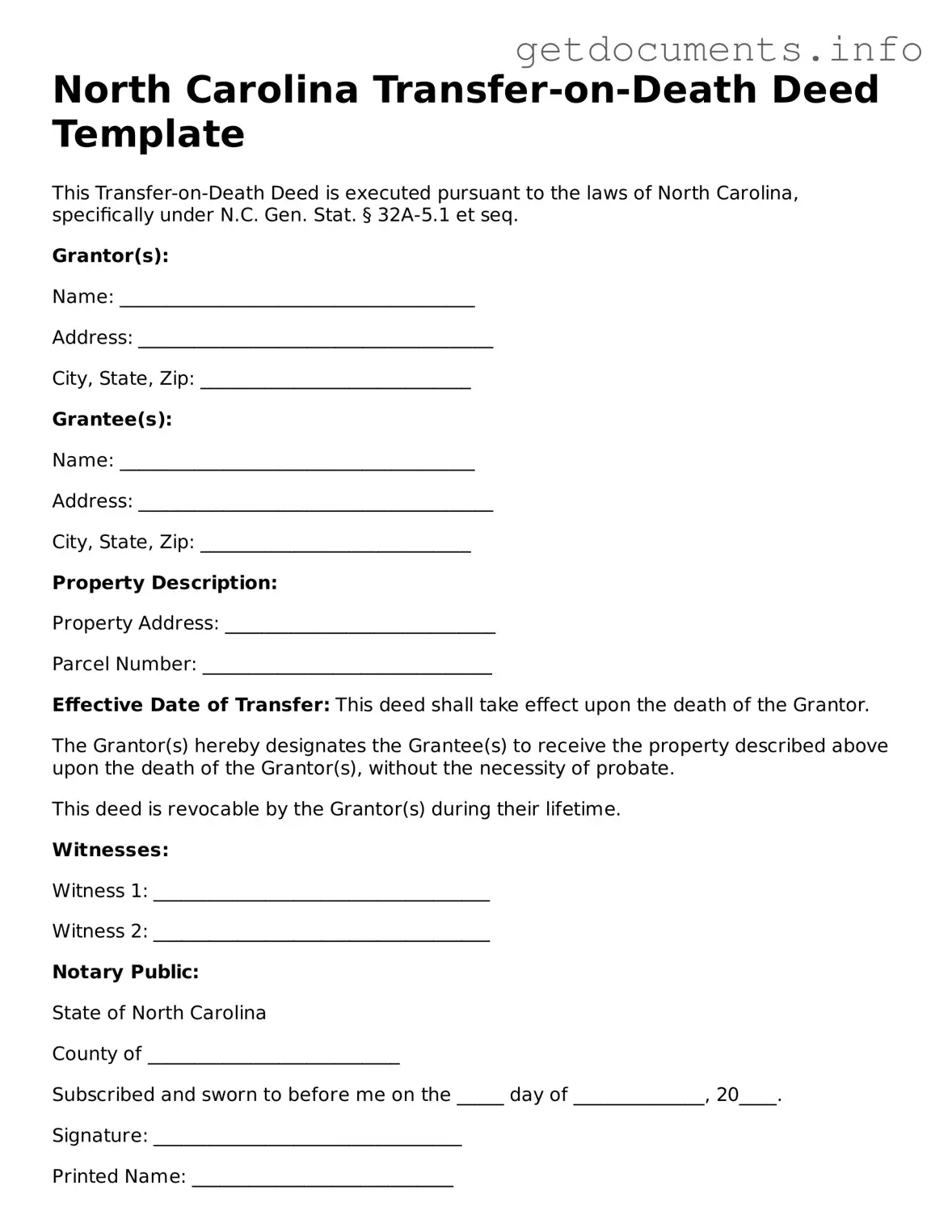Free Transfer-on-Death Deed Template for North Carolina
The North Carolina Transfer-on-Death Deed is a legal document that allows property owners to designate a beneficiary who will automatically receive their property upon their death, bypassing the probate process. This tool offers a straightforward way to ensure your property is transferred according to your wishes without the complexities of probate court. Ready to secure your property for your loved ones? Fill out the form by clicking the button below.
Access Transfer-on-Death Deed Editor
